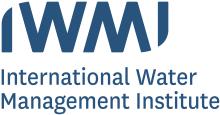Resource information
Water is being transferred out of agriculture to meet the growing demand in other areas, often without an agreement of or compensation to farmers with irrigated land and water rights. Furthermore, there is a failure to recognize that irrigation systems supply water not only for the main fields, but also for domestic uses, home gardens, trees and other permanent vegetation, and livestock. Other productive uses include fishing, harvesting of aquatic plants and animals, and a variety of other enterprises such as brick making. In addition, irrigation systems can have a positive or negative effect on wildlife habitats. Thus, the withdrawal of water affects the rural household, rural economy, and the environment in a number of ways. This paper argues that to ensure efficient, equitable, and sustainable water use, to reduce poverty and improve the well-being of the community, irrigation and water resources policies need to take into account all uses and users of water within the irrigation system. The multiple uses of water in the Kirindi Oya irrigation system are examined in this paper. An interdisciplinary group of scientists have investigated a number of areas including water accounting, water quality, household water use, the valuing of water for alternative uses, and the complementarities, competition, and conflicts among uses and users.



